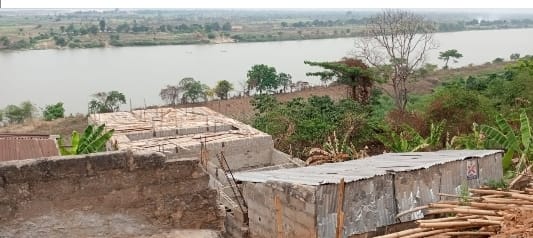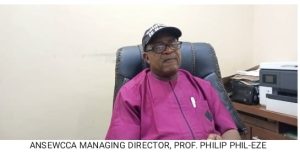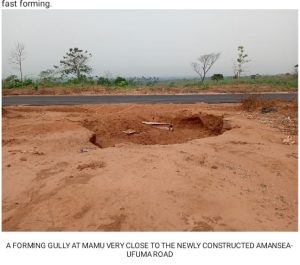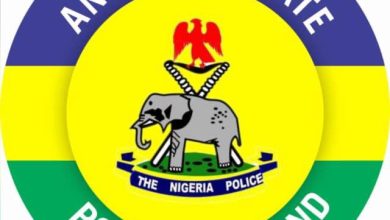
By Alfred Ajayi
Decades ago, Anambra’s forest reserves were a sanctuary for a myriad of flora and fauna, haven of serenity and life serving environmental and climate amelioration purposes. However, the forest reserves, once teeming with biodiversity and natural beauty, are now under severe threat from unchecked physical development and inadequate government conservation. This alarming trend not only jeopardizes our environment but also the livelihoods and health of the communities.
According to the Food and Agricultural Organization, (FAO), forest preservation protects the watersheds and offers ecosystem services to those around them. But, with about 80 per cent of the country’s population dependent on forests for fuel, food, fibres, medicines, and dyes among others, Nigeria, as at 2018, has lost about 96 per cent of its original forest.
A March 2022 report by Dataphyte revealed that the value of forestry sector’s contribution to Nigeria’s economy grew by only 1.41% in the fourth quarter of 2021 to N52.2 billion compared to fourth quarter of 2020, representing a 10.6% increase from third quarter same year. Between third and fourth quarters of 2021, forestry contributed a paltry 0.26% to the nation’s Gross Domestic Product.
A study by two scholars from the department of Geography and Environmental Management, University of Ilorin, Ahmed and Olaitan entitled “The Challenges of Deforestation and Management in Nigeria: Suggestions for Improvement”, puts the total forest decline between 1979 and 2020 in South East at 53% while another research conducted with Remote Sensing and Geographic Information System found that Anambra State has lost almost one quarter of its forest covers between 1980 and 2020.
This, according to Professor Philip Phil-Eze, the Managing Director of the State Erosion, Watershed and Climate Change Agency, (ANSEWCCA), who was part of the study, has resulted in the sun heating directly on the soil, increased surface temperature, as well as increased likelihood of global warming and climate change.
Developers driven by inordinate urge for profit compromise influential locals and state authorities financially to gain access to the forests. “They have bought up all recreational open spaces in our urban centres to the extent that trees have largely disappeared,” Phil-Eze regretted.
Echoes of regret
Standing at the edge of what was once known as Akpaka Forest Reserve, 76-year old former forest officer, Samuel Okoye, looked in utter disbelief that the towering trees, which once formed a dense canopy teeming with life, have given way to modern structures leaving little or no trace of its former reality. Okoye’s heart ached at the humongous damage proving the nature’s vulnerability to human greed and inaction.
He remembered the good old days when the 276-hectare forest reserve, established in 1929, was a symbol of natural splendor and ecological balance. It took a phone call from this reporter, who was on a fact-finding visit to Akpaka to bring him back to consciousness.
Welcome To Akpaka, The lost lush forest reserve
The septuagenarian recounted that the fragmentation of the watershed followed a Federal Government’s request for a portion for housing estate in 1992.
“The then director, Mr Okeke, gave them over 20 hectares. But, after the Federal Housing was built, allotees started giving money to the surveyors, who encroached beyond the allotted portions, almost to the entire forest reserve”.
“We challenged them, but government didn’t support us. They said that the forestry department is under the government and they can do anything with it.
“In 1997, the man who bought this place got the police to arrest us. They took us to Awka and each of us bailed ourselves,” Okoye regretted pointing at the house as he led this reporter through the now urbanized settlement.
The original owners of the land got agitated by the sudden change of purpose, resulting in protest which forced the government to start plotting the land. “During Attah’s military regime, Onitsha people insisted that, they must be duly compensated before government would give it out,” Okoye recalled.
“Later, Governor Ezeife’s administration divided it into three and shared to Ekwerekwu and Nwokedi families while retaining a part for government,” he recounted.
SAMUEL OKOYE, RETIRED FOREST OFFICER AT AKPAKA
Since then, Akpaka has seen endless fragmentation with the original buffer zone becoming a tarred road, while the second demarcation is also built up with many residential buildings. Federal Government’s warning was conveyed in a signpost by the National Inland Waterways Authority, (NIWA), reading, “Property of Federal Government, access only to authorized persons”.
Another State government’s directive, “Remove by ANSG” issued on 30th November, 2018, and 25th August, 2023, was sighted on the walls and gates of many houses. The two directives have been flouted apparently without consequences.
“Something like this cannot go on for this long without government involvement,” one of the residents, Philip Abraham, alleged.
Development has been over-stretched to the bank of the river leaving residents with dire consequences. “We know the challenges coming out from the situation in Akpaka with the serious erosion problem. Left for me, we would have done things differently, Dr Felix Odimegwu, the State’s Commissioner for Environment regretted.

Mamu drifting towards Akpaka
Attention has been shifted from Akpaka to the Mamu Forest Reserve in Orumba North Local Government Area, established in 1928 to fight erosion menace and reduce the destructive effects of climate change. As at 24 February 2024 when this reporter visited, an anonymous source within the Ministry of Environment regretted that only 18 out of its original 64 compartments are functional. “The damage here is massive,” he noted.
Fragmentation is evident in the number of fences already erected by allotees some of which had been pulled down, signaling unease around the deals. Access roads have been created in various parts of the reserve to ease access for buyers, while the threat of erosion is visible with gullies fast forming.

Mr Ezechukwu Okoli, the President General of Ndiukwenu, one of the donor communities, decried the situation. “Ozuh, Mkpogho and Ubani villages of Ndiukwenu and the neighouring Okpeze donated land for Mamu forest reserve. We were not informed when they started giving out the reserve for development. As I speak to you, they are still buying land at Mamu.
A letter dated 8th August, 2007 written by one C.A Ezejesi (Esq) on behalf of the then Commissioner for Environment, was sighted, responding to the request for the de-reservation of part of Mamu forest reserve for development purposes.
It read, “It is important that we remind you that one of the reasons for constituting the area a forest reserve was to preserve the fragile soil type which is much liable to erosion. We all can see how erosion is seriously threatening the only road leading to the reserve especially around Ozuh enclave as a result of human activities there”.
This response from the then government and the sustained protests by the Ozuh people have not changed anything. “Despite our protest letters to the governor and the Ministry of Lands, they went ahead because of their inordinate ambition,” Ezeokoli alleged.
“Since we donated our lands for forest reserve, we should have been duly consulted before any change. The matter is still in court but we are still talking with the government for amicable resolution”.
Apart from the fear of erosion, heat wave, a globally prevailing effect of climate change is a growing concern for residents. “Many years ago, our place was very serene and cool. But now, we suffer from excessive heat because of deforestation by developers,” Ezeokoli remarked in March 2024.
Mamu as Awka 2.0
Despite concerns around Mamu forest reserve, Anambra State government seems unperturbed with its plan around it. Commenting on the situation, the Commissioner for Lands, Prof. Offornze Amucheazi said that the fate of Mamu was determined prior to the current Soludo’s administration. He also denied allegation of conivance with developers to de-reserve Mamu.
“Anambra State is land starved while erosion and flooding are ravaging us. So, there is so much pressure on the few available areas for development. Before we came in, part of the Mamu Forest Reserve had been de-zoned by the previous administration and the communities were given compensatory plots, (a claim denied by the President General, Ezeokoli).
The Lands Commissioner further remarked, “If we leave it the way it is, we run a situation where the entire area will not be properly managed”.
“You have heard the governor talk about Awka 2.0. That is where we have it. We’ve taken out time and the design is ongoing,” Amucheazi revealed during an interview on the 25th March, 2024.
“It’s a brand-new city and even within that city, we’re going to have the forest, the trees, the green areas and to also check the soil loss. It’s already a problem as it is. So, we have insisted that no one can undertake any construction unless he obtains approval from the ministry”.
Other forest reserves in Ebenebe, Achalla, Osamalla, and several community forests suffer similar fate, while the proposed Aguaba forest reserve has become an estate. “We are on the verge of losing almost all of them,” Onyinye Achugamonye, the Head of Department, Forestry and Wildlife, Ministry of Environment, regretted.
She blamed deforestation primarily on manpower shortage among other factors.
“Many years ago, we had 10 guards manning Mamu forest reserve. So, no one just went to do anything there without any of them noticing it. Today, we have just one. We also don’t have adequate number of forest managers,” Achugamonye lamented.
“The old forestry law says that the Ministry and the Department of Forestry and Wildlife must be consulted before anyone goes to do anything within any of the forest reserves. But, this is not the case in Anambra”.
The Commissioner for Environment is also touched by the environmental effect of deforestation going on in the state. “As a Commissioner for Environment, when you cut down a tree, it’s almost like you are cutting the blood out of my body. Once forest is de-reserved, my heart bleeds. That shows you the concern that the ministry and the state has,” he said.

In 2020, the state established the Erosion Watershed and Climate Change Agency (ANSEWCCA) to among other things mainstream and implement climate change resilience agenda while also undertaking reforestation, vegetative and other ecological friendly measures to augment rigid intervention. Also, the Forestry and Wildlife Department is as old as the ministry. However, the alarming deforestation rate has brought their efficiency into query.
One of the reasons for their seeming inefficiency is lack of coordination between relevant government ministries, departments and agencies. “Many MDAs dealing with the environment, deforestation and erosion have not been working together. There is no pooling of ideas together to move in the same direction to achieve a common goal,” one of the anonymous government officials, alluded.
Concerns around Forestry Law
Anambra State operates an obsolete forestry law dated back to 1956, which has largely been described as unfit for the time. It provides that, “any person who on any lands to which its regulations apply, takes any timber or protected tree or any protected minor forest produce or uproots, destroy or injures any protected tree or protected minor forest produce or any tree or plant from which any protected minor forest produce is obtainable, shall be guilty of an offence.
Its section 31 prescribes that applications for the grant of any license under the law shall be made to the Director of Forestry while a fine range of ₦10,000 – ₦100,000 or imprisonment not exceeding twelve month or both is prescribed for any person convicted of an offence under the law. These provisions are viewed as too weak to deter deforestation.
However, the state House of Assembly recently passed the new Environmental Law for the State. Section 114 of the new law prescribes a fine of not less than two hundred thousand naira or imprisonment for a term of not less than six months for anyone convicted of cutting protected trees.
For this and many other novel provisions, the Commissioner for Environment believed that the law would be the game changer, boosting government’s resolve to see Anambra reckoned as a green state.
“The law will aid the maintenance of the forest reserves. With it, citizens should expect a better management of our forest reserves.
“In the new law, we indicated that June 10th every year will be celebrated as Anambra Tree Planting Day. We started it this year with urban forestation. We want to see our streets, roads and highways adorned with trees”.
While the state eagerly awaits the governor’s assent to the new law, the law is believed to have the potential to address deforestation. “The “cut one, plant three” initiative will ensure that anyone who wants to cut down trees must take permission from the Forestry Department and must replant trees in the place of the one cut down. Violations will be penalized with the relevant sections of the law.
There are also national laws and regulations governing forestry in Nigeria as well as international instruments. Among them are: the United Nations forest instrument, the Rio conventions, operating, the Convention on Biological Diversity (CBD), the United Nations Framework Convention on Climate Change (UNFCCC) and the International Tropical Timber Agreement ITTA, (1983).
Others are the International Tropical Timber Agreement (ITTA) 2006, the Convention on International Trade in Endangered Species of Wild Fauna and Flora (CITES), the Convention for the Protection of the World Cultural and Natural Heritage (CWH), and Addis Abba Principles and Guidelines for the Sustainable use of Biodiversity.
The National Policy on Environment (2016) provides for the protection and sustainable management of natural resources, including forests, while the National Forestry Policy (2006) aims to ensure sustainable forest management, conservation of biodiversity, and equitable sharing of benefits derived from forest resources. Nigeria’s Vision 20: 2020, equally contains strategies for sustainable environmental management, including forest conservation and reforestation efforts.
The National Biodiversity Strategy and Action Plan (2002) contains strategies for conserving forest biodiversity and sustainable forest management practices while the country’s REDD+ Strategy (2012) aimed to reduce emissions from deforestation and forest degradation, enhance carbon stock, and sustainably manage forests.
The 2011 gazetted National Environmental (Desertification and Drought Mitigation) Regulations, in its section 2 (f) seeks to attain the 25% national forest cover as prescribed by the Food and Agricultural Organization (FAO) towards becoming self-sufficient in wood and other forest resources, as well as enhance ecological integrity and abate climate change impacts.
The 2015 Sustainable Development Goals (SDGs) with 17 targets identified Goal 15 for conservation of life above the ground of which forests make up a significant component. They were created with the aim of achieving peace and prosperity for people and the planet while tackling climate change and working to preserve oceans and forests. Between 2015 and 2019, at least 100 million hectares of healthy and productive land were degraded every year, impacting the lives of 1.3 billion people.
Experts strongly believe that halting deforestation and restoring the use of terrestrial ecosystems is necessary to reduce the loss of natural habitats and biodiversity which are part of our common heritage.
The soaring rate of deforestation in Anambra and Nigeria in general remains a sore test of efficacy for the aforementioned laws, policies and instruments. This means that the solution lies more in implementation and enforcement than in existence of those documents.
Reserves still in legal existence
Despite the almost irredeemable damage done to the forest reserves across Anambra, experts argued that all the forest reserves are still in legal existence. “The forest reserves are still in existence until the laws that established them are repealed. Whatever is done to the contrary is illegal,” Ogbodo, a former National Vice President, International Society of Tropical Foresters (ISTF), Nigeria Chapter and Pioneer Director, Sahelian Institute for Bamboo Research and Entrepreneurship Development, (SIBRED), submitted.
Section 123 (1) of the new law attests to this stating that all forest reserves existing at the time of the commencement of this Law shall be deemed to have been constituted under and in accordance with the provisions of this Law.
While the current Soludo’s administration is acknowledged for its massive tree planting campaign which has seen the distribution of millions of hybrid tree seedlings such as palm trees, coconut, bread fruits, pear, and others, foresters argued that as commendable as the initiative may be, those economic trees being planted cannot replace forest trees such as Iroko, teak, gmelina among others.
“So, when you are planting cocoa and oil palm, you are promoting agriculture and neglecting forestry. It will not yield any international recognition or carbon credit from the Global Climate Fund. So, the government needs to appreciate that,” Ogbodo counseled.
Happily, the state government is equally concerned about the rising cases of deforestation, hence the enactment of the new environmental law part of which addresses issues around forestry in the state. However, the Commissioner for Environment argued that development pressure must be handled with utmost care to ensure the future is not jeopardized.
“As the population increases, we know that there is need to expand and development has to cut through the green areas. But, in Anambra State, only 65% of the land owned by an individual is buildable, leaving 35% for greening, tree planting, grassing and flowers. This has been inserted into the Building Code and the 2024 Environmental Law.
“By Mr Governor’s directive, we must plant over 1 million coconuts, oil palm and other seedlings in Anambra to help create a greening effect, curb erosion and provide food for the populace”.
The Managing Director of the Climate Change Agency, Prof. Phil-Eze, said, “We are also teaching our people what to do to discourage deforestation and encourage afforestation. That is why our slogan in the agency is – ‘plant a tree to prevent erosion”.
State poised to prevent catastrophic future
The World Wildlife Fund, (WWF) blames around 10% of global warming on forest loss or damage. According to the Fund, “If forests are cleared, or even disturbed, they release carbon dioxide and other greenhouse gases. In the time it takes to say ‘deforestation’, another chunk of forest, the size of a football pitch, is destroyed.
“There’s only about half the number of trees on the planet today than there were when humans first evolved. And the fastest rate of forest destruction has been in the past couple of centuries,” WWF reveals.
The consequences of deforestation, according to forestry experts, are dire. This calls for concerted efforts to reverse the trend. “Well, we have lost Akpaka completely and we have also lost Nkisi stream because it’s fully silted up now”.
“There is a global directory that every ecosystem can be developed. But, at least 17% of such ecosystem would be left intact in its integrity”. Every development takes place within one watershed or the other and if placed wrongly can initiate disruption,” Phil-Eze said.
Odimegwu, the Commissioner for Environment also noted, “To aid the livable condition of the urban areas, the governor launched the 1 million tree planting campaign in 2022 and the Clean, Green and Sustainable Anambra State and that is the theme for the Ministry of Environment. But, if there is need that a tree will be cut somewhere, then there is also the provision for more planting of trees elsewhere.
However, Ogbodo advised the Ministry of Environment to concentrate more on policies while it creates an agency to regulate the sector. “Now that the law is passed, when it is assented to, a regulatory agency is compelling. The ministry and department of forestry cannot do that.
The need for massive recruitment of manpower is also indisputable. “A place like Mamu should have at least 10 forest guards and three forest officers or managers. Anything short of that will be dangling between failure and success and anything far away from that definitely is failure,” the HOD, Forestry and Wildlife submitted.
Commenting on the need for proper coordination between relevant MDAs, ANSEWCCA Managing Director said a letter would be drafted to the Governor to get that done in no distant time. “We have to come to a round table and understand each other, looking at the environment with a common lens so that we can develop without disturbing the environment”.
Developers are also called upon to spare some thoughts for environmental sustainability as they go about their lucrative real estate business. Most respondents strongly opined that whatever Anambra currently earns from its forestry sector will most like reduce in coming years with more intense climate change impacts.
“If anything happens to this one earth we have, our survival is put at jeopardy. So, environmental sustainability should be paramount. We should be thinking about a balance in the system where one sector does not outplay the other,” Ogbodo counseled.
“You plan for a good house to survive. But when you destroy the environment, you have created an opportunity for you not to survive,” the Commissioner for Environment warned.
For Anambra to urbanize and develop without compromising the future, all hands must be on deck. Laws and regulations must be strictly enforced while violations are punished adequately,” respondents submitted.



